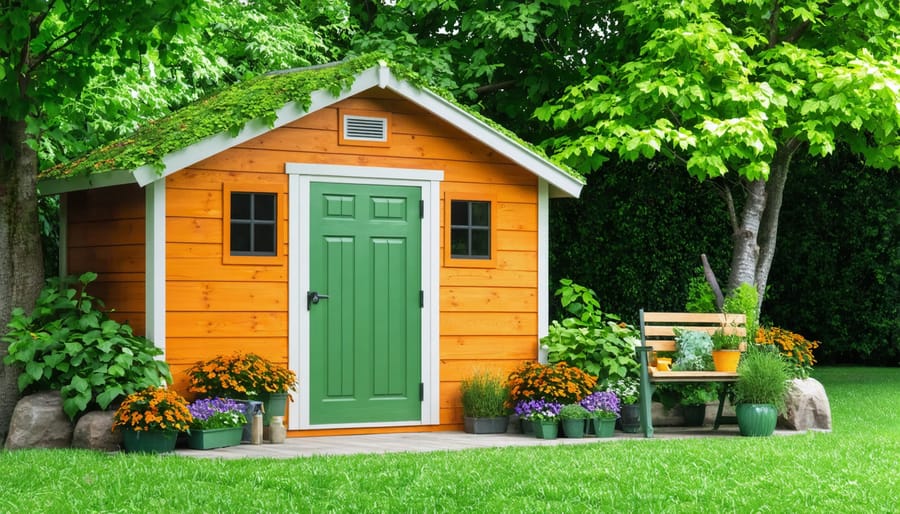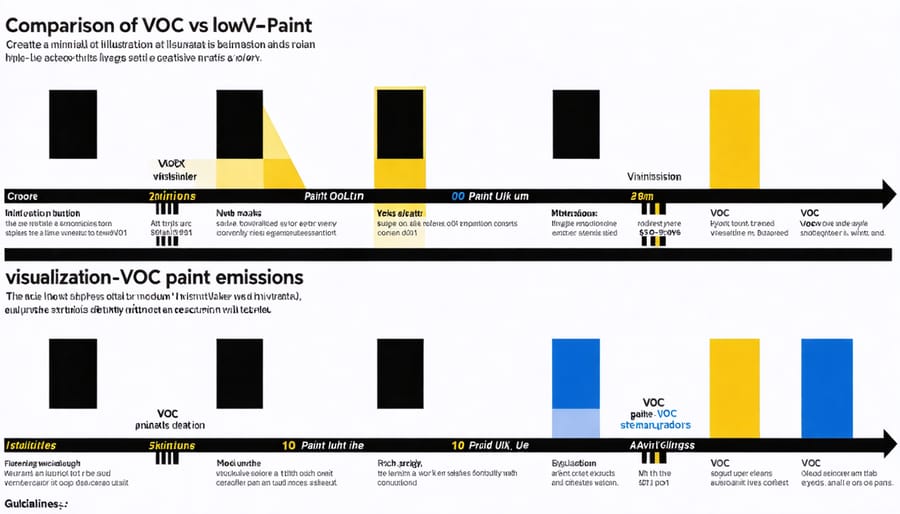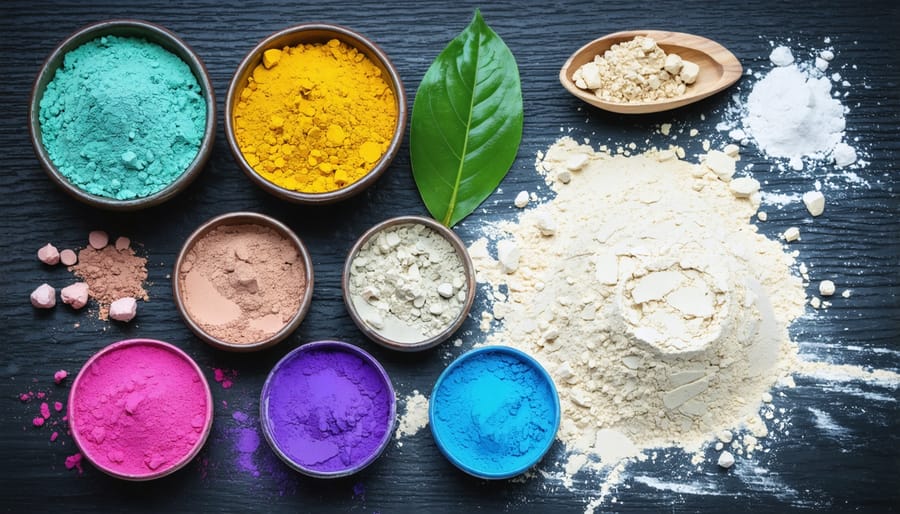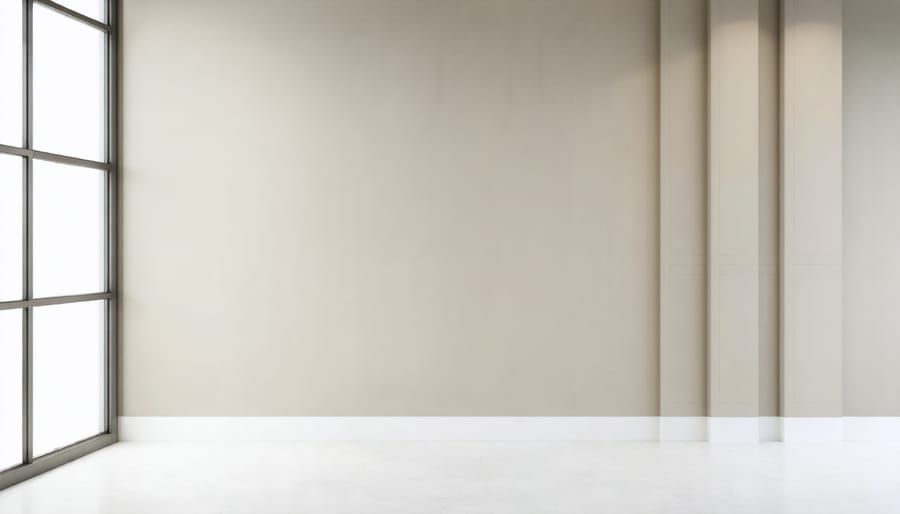These Earth-Friendly Paints Keep Your Shed Beautiful (And The Planet Safe)

Transform your home and environment by choosing eco-friendly materials like low-VOC and natural paints that protect both your shed and the planet. These innovative formulations harness the power of sustainable ingredients such as plant-based resins, mineral pigments, and natural oils to deliver exceptional durability without harmful environmental impact. Beyond their earth-conscious composition, eco-friendly paints offer superior breathability, reducing moisture buildup and extending your shed’s lifespan while creating a healthier space for storage. Modern green paint technologies have evolved dramatically, now matching or exceeding traditional paints in coverage, weather resistance, and color retention – all while maintaining lower carbon footprints and supporting better air quality for your backyard ecosystem.
What Makes Paint Eco-Friendly?
Low and Zero VOC Formulations
Volatile Organic Compounds (VOCs) are harmful chemicals that evaporate into the air as paint dries, contributing to indoor air pollution and environmental damage. Traditional paints can release VOCs for years after application, potentially causing headaches, respiratory issues, and other health concerns. Fortunately, eco-friendly paint manufacturers now offer low and zero VOC formulations that significantly reduce or eliminate these harmful emissions.
Low VOC paints contain less than 50 grams of volatile compounds per liter, while zero VOC options contain less than 5 grams per liter. These environmentally conscious alternatives perform just as well as conventional paints, offering excellent coverage and durability without the toxic fumes. Many brands have even developed innovative plant-based binders and natural pigments to replace synthetic chemicals entirely.
When shopping for eco-friendly paint, look for third-party certifications like Green Seal or GREENGUARD, which verify the manufacturer’s VOC claims and ensure the product meets strict environmental standards.

Natural and Sustainable Ingredients
Eco-friendly paints stand out for their use of natural, renewable ingredients that minimize environmental impact. These paints typically contain plant-based oils like linseed, hemp, or citrus, which serve as sustainable alternatives to petroleum-based binders. Natural clay, milk protein, and mineral pigments provide rich, lasting colors without synthetic dyes or harmful chemicals. Many eco-friendly formulations incorporate materials like chalk, limestone, and natural latex, which are both abundant and biodegradable.
What makes these ingredients particularly appealing is their low volatile organic compound (VOC) content. Plant-based binders and natural pigments release minimal harmful emissions during and after application, making them safer for both the environment and your health. Additionally, these natural components often create breathable surfaces that help regulate moisture levels, reducing the risk of mold and extending the life of your shed’s wood surfaces.
These sustainable ingredients also contribute to superior coverage and durability, often requiring fewer coats than conventional paints while maintaining their vibrant appearance for years to come.
Best Eco-Friendly Paint Options for Your Shed
Water-Based Paints
Water-based eco-friendly paints are a cornerstone of sustainable shed solutions, offering exceptional performance while being gentler on the environment. These paints use water as their main solvent instead of harmful chemicals, resulting in significantly lower VOC emissions during and after application. This makes them safer for both you and your family to work with, especially when painting in enclosed spaces.
One of the biggest advantages of water-based paints is their quick drying time, typically allowing for a second coat within 2-4 hours. They’re also incredibly easy to clean up – all you need is soap and water, no harsh chemical cleaners required! These paints offer excellent coverage and durability, standing up well to weather conditions while maintaining their color vibrancy over time.
For shed applications, water-based paints provide excellent adhesion to most surfaces and are particularly effective on both exterior and interior walls. They’re resistant to mildew and UV damage, making them perfect for outdoor structures. Plus, their low odor means you can start using your shed almost immediately after painting.

Milk and Chalk-Based Paints
Milk and chalk-based paints offer a fascinating blend of tradition and eco-consciousness. Milk paint, made from milk protein (casein), lime, and natural pigments, has been used for centuries and creates a unique, matte finish that ages beautifully. It’s completely biodegradable and emits zero VOCs, making it perfect for environmentally conscious homeowners.
Chalk paint, derived from calcium carbonate and natural minerals, provides excellent coverage and adheres well to most surfaces without primer. Its thick, velvety texture creates a charming rustic appearance that’s particularly suitable for vintage and farmhouse-style projects. Both paint types are breathable, allowing moisture to escape rather than becoming trapped beneath the surface.
These natural alternatives are particularly effective for indoor use and can be sealed with natural waxes or oils for added durability. While they may require more frequent maintenance than conventional paints, their environmental benefits and distinctive aesthetic appeal make them increasingly popular choices for eco-minded DIYers.
Plant-Based Finishes
Plant-based finishes represent nature’s answer to conventional paints, offering an incredibly sustainable choice for your shed. These finishes are derived from renewable resources like linseed oil, citrus oils, and plant resins, making them completely biodegradable and safe for the environment. Natural milk paint, made from milk protein (casein), lime, and earth pigments, has been used for centuries and provides a beautiful, rustic finish that many homeowners love.
Another popular option is hemp oil finish, which not only protects wood but also enhances its natural grain pattern. Clay-based paints, created from natural clay and plant materials, offer excellent coverage and create a breathable surface that helps regulate moisture. These plant-based alternatives typically emit zero VOCs and are safe to apply without special protective equipment.
While they may require more frequent reapplication than conventional paints, plant-based finishes age gracefully and can be refreshed easily without harsh chemicals or extensive preparation.
Application Tips for Eco-Friendly Shed Paints

Surface Preparation
Proper surface preparation is crucial for ensuring your eco-friendly paint adheres well and lasts longer. Start by thoroughly cleaning the shed surface with a mixture of warm water and mild, biodegradable soap to remove dirt, dust, and debris. Avoid harsh chemical cleaners that could harm the environment or compromise the eco-friendly nature of your project.
Next, inspect the surface for any damage. Fill holes or cracks with eco-friendly wood filler and sand the entire surface lightly using medium-grit sandpaper. This creates a smooth base for the paint while removing any loose paint or rough spots. Remember to wear a dust mask during sanding and collect all debris for proper disposal.
For metal surfaces, remove any rust using a wire brush and treat affected areas with a natural rust converter. If dealing with previously painted surfaces, test for lead-based paint, especially on older sheds. If lead is present, consult a professional for safe removal.
Finally, wipe down the surface with a damp cloth to remove sanding dust and allow it to dry completely before painting. Choose a dry, mild day for preparation work to ensure optimal results.
Application Techniques
Applying eco-friendly paint requires careful preparation and technique to ensure the best results. Start by thoroughly cleaning the surface and allowing it to dry completely. For optimal adhesion, lightly sand the area and wipe away any dust before beginning.
Most eco-friendly paints work best when applied in thin, even coats using high-quality brushes or rollers. Work in small sections, maintaining a wet edge to prevent lap marks. Unlike conventional paints, many eco-friendly options may require additional coats for full coverage, so patience is key.
Temperature and humidity play crucial roles in the application process. Apply paint when temperatures are between 50-85°F (10-29°C) and humidity is moderate. Avoid painting in direct sunlight or when rain is expected within 24 hours.
For best results, use natural-bristle brushes for oil-based eco paints and synthetic brushes for water-based formulas. Clean your tools with mild soap and water immediately after use – most eco-friendly paints don’t require harsh solvents for cleanup.
Remember to ventilate your workspace well, even though eco-friendly paints typically have lower VOC emissions. Allow each coat to dry completely before applying the next one, following the manufacturer’s recommended drying times.
Maintaining Your Eco-Friendly Painted Shed
Maintaining your eco-friendly painted shed doesn’t have to be complicated or harmful to the environment. Regular upkeep ensures your shed stays beautiful while protecting your investment and the planet. Start by implementing natural maintenance methods to keep your shed clean and well-preserved.
Every three months, gently wash the exterior with a mixture of mild, biodegradable soap and water. Use a soft brush or cloth to avoid damaging the paint surface. Pay special attention to areas near the ground and under eaves where dirt and moisture tend to accumulate.
Inspect your shed twice a year for any signs of wear, particularly after severe weather. Look for peeling paint, water damage, or areas where the protective coating might have worn thin. Address any issues promptly to prevent further deterioration.
To extend the life of your eco-friendly paint job, trim back any vegetation that touches the shed walls. This reduces moisture retention and prevents scratches from branches. Consider installing rain gutters to direct water away from the walls, protecting both the paint and the structure.
Keep a small amount of your eco-friendly paint on hand for touch-ups. Store it in a cool, dry place and check periodically to ensure it hasn’t separated or deteriorated. When making repairs, clean and dry the area thoroughly before applying new paint.
For stubborn stains or mildew, use environmentally friendly cleaning solutions like vinegar and water or baking soda paste. These natural alternatives are just as effective as harsh chemicals and won’t compromise your commitment to eco-friendly maintenance.
Choosing eco-friendly paint for your shed is more than just a trend – it’s a meaningful step toward protecting our environment while creating beautiful, durable spaces. These sustainable paint options offer remarkable benefits, from improved air quality and reduced chemical exposure to long-lasting protection for your outdoor structures. By selecting low-VOC or zero-VOC paints, you’re not only safeguarding your family’s health but also contributing to a cleaner planet.
Remember that every environmentally conscious choice we make adds up to significant positive impact. When you opt for eco-friendly paint, you’re supporting innovative manufacturers who prioritize sustainability and encouraging the wider adoption of green practices in the paint industry. The slight premium you might pay for these products is an investment in both your property’s longevity and our planet’s future.
As you plan your next shed painting project, consider the lasting impact of your choice. With today’s advanced eco-friendly formulations offering excellent coverage, durability, and a wide range of colors, there’s no need to compromise between environmental responsibility and outstanding results. Make the green choice – your shed, your health, and our environment will thank you for it.

